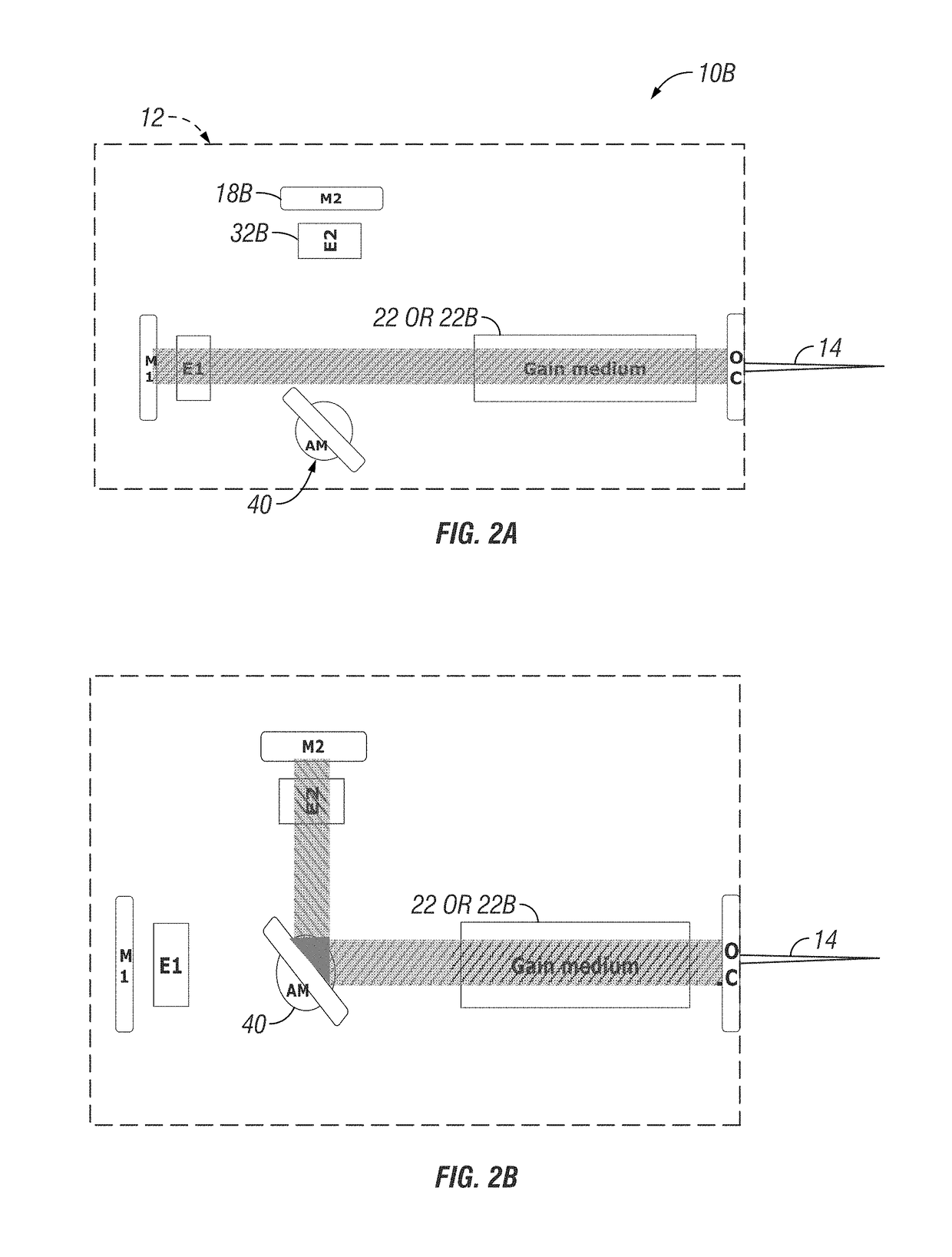Background removal from Raman spectra by an intracavity active-tuning element for a laser
a technology of active tuning element and background removal, which is applied in the field of chemical detection utilizing raman spectroscopy, can solve the problems of limiting the performance of raman spectroscopy, high cost and impracticality, and complicated design, and achieves simple, effective, compact and economical multiple wavelength raman spectra acquisition, and improves detection performance. performance, the effect of improving the detection performan
- Summary
- Abstract
- Description
- Claims
- Application Information
AI Technical Summary
Benefits of technology
Problems solved by technology
Method used
Image
Examples
example 1
[0044
[0045]In the present invention, multiple-wavelength Raman spectra are collected via a single non-laser diode instrument equipped with a tuning element inside the laser cavity. Examples of this invention are shown in FIGS. 1A-D, in which the laser may be either a gas or solid-state laser, such as are well-known to those skilled in this technology and commercially available from a variety of commercial sources.
[0046]In Figures lA and B, a first exemplary embodiment of a laser generation instrument 10 includes a conventional laser cavity 12 from which is developed a laser beam 14. As is further typical, the interior 16 of cavity 12 includes a gain medium 22 between a fixed mirror 18 and an output coupler 20 on opposite sides of gain medium 22. By well-known techniques, excitation energy from an energy source (not shown) is applied to gain medium 16. Light energy is produced that basically bounces back and forth between fixed mirror 18 and the mirror component of output coupler / mir...
example 2
[0059
[0060]An additional implementation, shown in FIGS. 2A and B, utilizes a modulator 40 to rapidly switch between two laser cavity end mirrors 18 and 18B with line narrowing elements, such as an étalon 32 and 3213 associated with each end mirror 18 and 18B. Instead of interposing a switchable or controllable element along a single optical path, as in FIGS. 1A-D, this embodiment. instead essentially switches between two alternative optical path sections between a cavity end mirror and the gain medium. The first optical path section (between gain element 22 and mirror 18 / etalon 32) is basically like in FIGS. 1A-D. The components would be selected and configured to generate a first state or laser output wavelength. The modulator 40 would be actuated to a position outside the optical path.
[0061]The second state, generating a second laser output wavelength, is effectuated by movement of modulator 40 into the optical path. This intercepts the laser energy and diverts it to the alternati...
example 3
[0065
[0066]In addition to the hardware configurations of Examples 1 and 2, the following hardware configurations are also envisioned for implementing intracavity laser tuning with or without the signal processing concepts discussed immediately above.
[0067]An acousto-optic modulator 40B is used to refract the cavity by an angle, theta or θ, allowing for rapid switching of wavelength by selecting a different narrowed cavity. (See FIG. 4). Such modulators are commercially available. One is discussed in G. D. Baldwin, Output power calculations for a continuously pumped Q-switched YAG:Nd3+ laser, IEEE J. Quantum Electronics, QE-7, 715, 1971, which is incorporated by reference herein. This is a variation on allowing switching between two laser wavelength states. The basic principle of such modulators uses the acousto-optic effect to diffract and shift the frequency of light using sound waves (e,g. at radio frequency). One configuration uses a piezoelectric transducer attached to a materia...
PUM
 Login to View More
Login to View More Abstract
Description
Claims
Application Information
 Login to View More
Login to View More - R&D
- Intellectual Property
- Life Sciences
- Materials
- Tech Scout
- Unparalleled Data Quality
- Higher Quality Content
- 60% Fewer Hallucinations
Browse by: Latest US Patents, China's latest patents, Technical Efficacy Thesaurus, Application Domain, Technology Topic, Popular Technical Reports.
© 2025 PatSnap. All rights reserved.Legal|Privacy policy|Modern Slavery Act Transparency Statement|Sitemap|About US| Contact US: help@patsnap.com



